Caciques, Orioles, Blackbirds and Tanagers
We're birding together in Guyana. I love showing birds to people. First is the yellow-rumped cacique (Cah-SEEK), an icterid named for pre-Columbian tribal chiefs who probably wore flashy clothes.
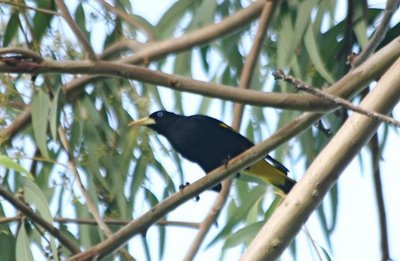 When this bird flies, his whole back half is glowing yellow. And he's a big boy--about the size of a pigeon. This cacique was on a hunt for palm fruits, which he dispatched neatly with his conical glow-in-the-dark bill. And dig those china blue eyes!
When this bird flies, his whole back half is glowing yellow. And he's a big boy--about the size of a pigeon. This cacique was on a hunt for palm fruits, which he dispatched neatly with his conical glow-in-the-dark bill. And dig those china blue eyes!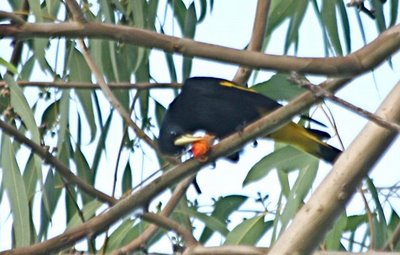
Caciques nest colonially, like their huge relatives the oropendolas, building great sacklike nests of grasses and rootlets. Here's a proud male on his nest:
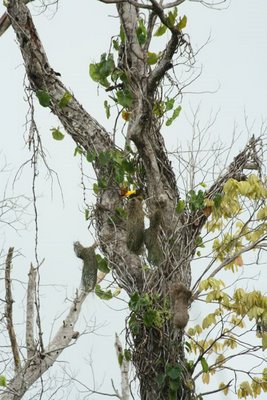
In the wet meadows along the roads, and especially near airports, we all got quick glimpses of Leistes (now Sturnella) militaris, the red-breasted blackbird. This bird acts and looks like a meadowlark or bobolink who got dipped in red paint. It sits atop posts and makes quick stuttering flights above the grasstops, only to drop in before you get a good look at it. It is spectacular, even in a brief glimpse, which was all I got:
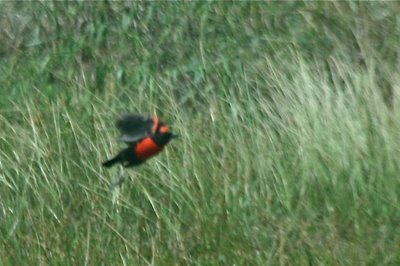
Another icterid which was nearly ubiquitous was the golden oriole. This lovely bird was constructing its sacklike nest in the botanic garden.
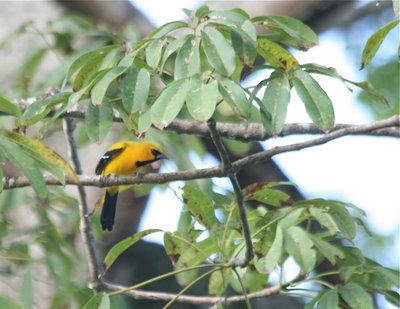
Everywhere we went, the golden orioles were busy weaving their egg-purses.
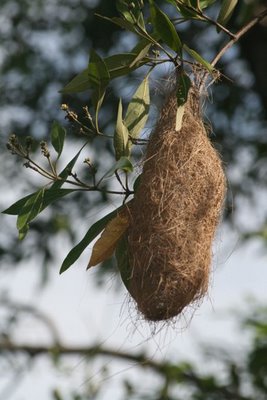
This one is just finishing up taking a poop. You probably liked the pose before I told you that.
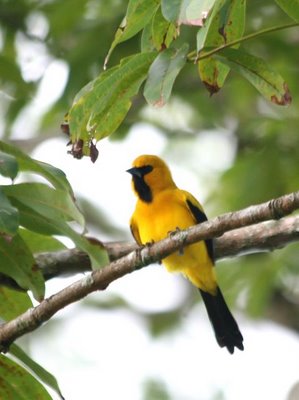
Perhaps feeling abashed, he struck a better pose for me:
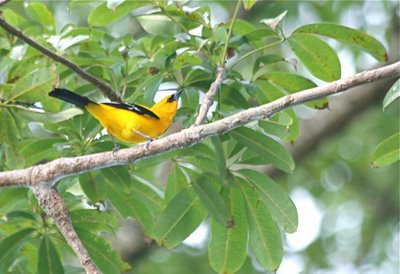 Here I am, not pooping.
Here I am, not pooping.As gorgeous and glowing as it was, there was something very familiar about the yellow oriole--it favors our Bullock's oriole. My switchboard really lights up when I see a bird that looks nothing like anything we have in the States. Well, this burnished-buff tanager is shaped like a scarlet tanager, but the similarity ends there.
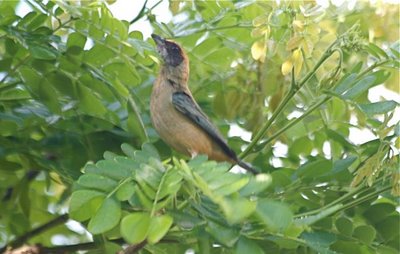
This pretty little tanager has the oddest color scheme--soft turquoise wings on an opalescent buff body. He tops it off with a black mask and a coppery crown.
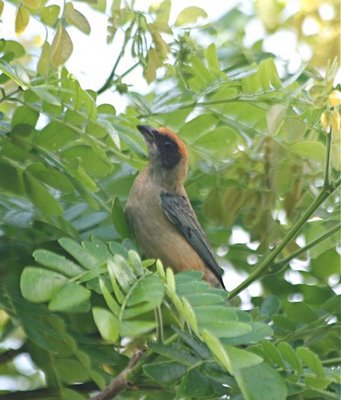 What a treat to see new birds, odd birds, any birds. Here's to birds! and how they enrich our lives.
What a treat to see new birds, odd birds, any birds. Here's to birds! and how they enrich our lives.Labels: burnished-buff tanager, Guyana birding, red-breasted blackbird, yellow oriole, yellow-rumped cacique





